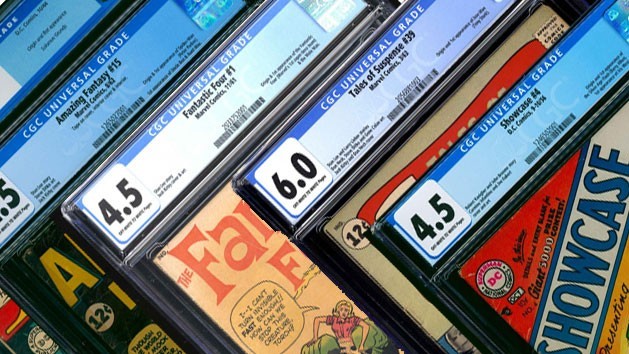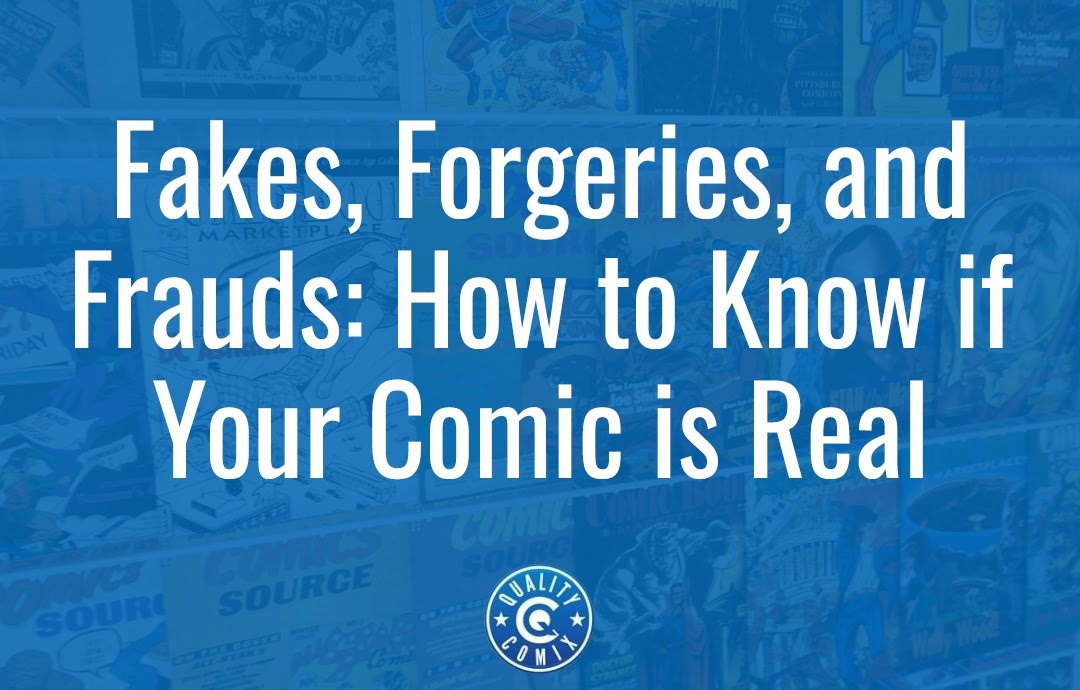
Collectibles, like comics, are an investment. They're pieces of media with limited quantities, limited quality, and a variable amount of interest that, in many cases, only grows. That kind of environment is ripe for investment, for speculation… and for fraud.
With any valuable item, there comes the opportunity to create fake versions of that item to pass off as real. This has been happening for all of human history – there are examples of counterfeit coins from thousands of years ago – and it should be no surprise that it still happens today.
Buyer beware, as they say. Maybe you bought a comic, and you're not sure if it's real. Maybe you're considering buying one, either online or in person, and you want to validate it. Maybe you're worried about fraud when you step into the comics investing world. Whatever the case may be, you need to protect yourself, and that means you need to know what to look for and how to identify the fakes, the forgeries, and the frauds out there.
First, let's talk about the types and categories of issues you might run into.
Table of Contents
Comic Book Counterfeits
First up, we have counterfeit comics. But here's the thing: true counterfeits – that is, copies of a comic that weren't printed legitimately but instead were printed by someone with resources to mimic the original – are very, very rare.
There are a few reasons for this.
One of the biggest is simply that most valuable comics are also old comics. Old comics were printed on disposable newsprint or cheap letterpress, and they aged like milk. The reason you see comics graded in part on the color of their paper is because that paper browns and yellows over time and with exposure to the air.
This is actually beneficial! Not because of the terrible paper but because it's very hard to even find paper that bad these days, and even if you can, it's very hard to make it look old enough to pass inspection. Counterfeit Golden Age comics – and even Silver Age comics – often just look and feel way too new. They just don't pass muster.
Then, you can look to the opposite side of the scale: newer comics. Newer comics are printed on newer, better paper, with more modern printing techniques and more standardized processes. That makes them a lot easier to counterfeit. But at the same time, the vast majority of those comics are only worth $5, sometimes even less, and are readily available. No one needs to counterfeit them when there are much better scams that can be run, like pump-and-dump scams. Why counterfeit books when you can buy legitimate copies to run a scam with instead?
There are some comics that are nevertheless vulnerable to counterfeits. Mostly, this falls into the indie comics range, largely in black and white comics, and in the contemporary era, as far back as the late 70s and 80s. Basically, it has to be something that's easier to replicate, harder to spot as fake, but still scarce enough to be both worth money and worth faking.
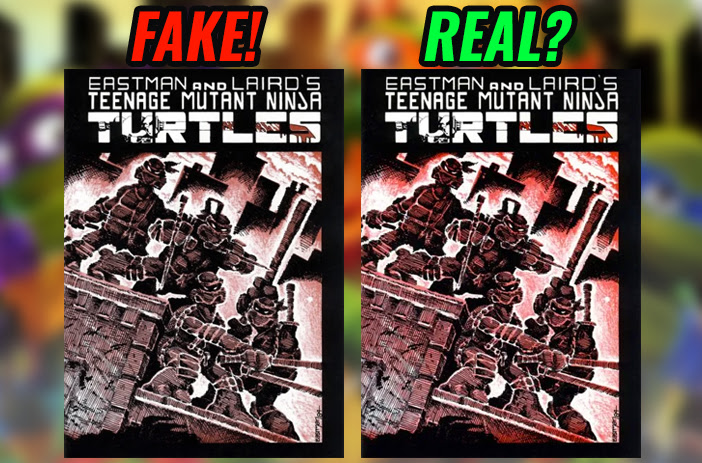
Then you have the rare example of a comic that was counterfeited at the time, which is itself just as old and scarce as the real thing. Like those ancient counterfeit coins above, they're still valuable because they have that age to them and are an artifact of history. The biggest example is the Teenage Mutant Ninja Turtles #1 counterfeit that sold for a price comparable to the real thing.
Forged Signatures
Another somewhat more common form of fraud in the comics industry is fake signatures. Signatures are a bit of prestige, a chance to make an issue of a comic stand out from the average issue because the owner got someone noteworthy to sign it. Usually, that someone was the creator of the character, like Stan Lee, or the writer or artist for the comic. Sometimes, it could be the celebrity who played the hero on the big screen.
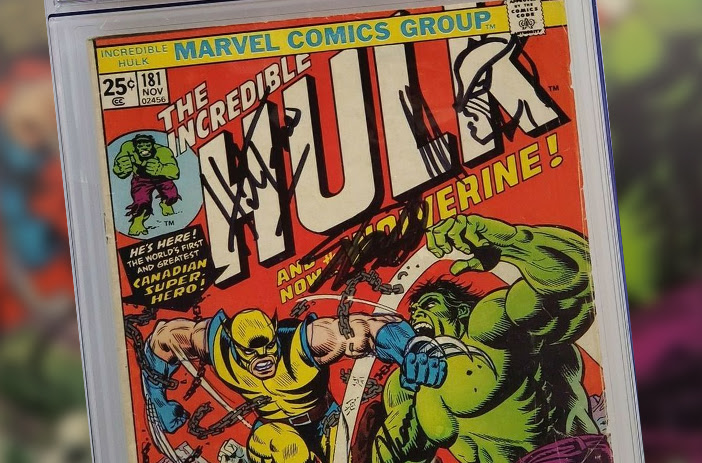
This is something I've already talked about elsewhere, so I'm not going too deep into it here. To sum up, faked signatures happen but aren't as common as some people might think; at the same time, signatures often don't actually make a comic more valuable, so there isn't much incentive to fake them. You can read more in my discussions:
- How to Authenticate Signatures on Your Comic Books
- Autographed Comics: Are Signed Comics Worth More?
If you're dealing with a signed comic, know that unless the signature was validated in some way, usually by a CGC representative who took it for grading and slabbing immediately, it's unlikely to add real value to the book and could even count as damage in grading.
Repaired Books
Now we're getting to something a lot more likely: repaired or restored books.
Any time someone takes an action to repair damage to a comic, there's a possibility that it will be considered a restored book. This can range from well-meaning librarians using archival paper and tape to repair tears and damage on books in their collection to people carefully undoing the staples of three different copies of a book, stitching together the best pages from each, and putting the staples back to make one "good" copy of the book. You might also see flaws carefully covered with ink and other common kinds of minor "repairs" that are not original.
This kind of restoration is, unfortunately, considered damage these days. While it keeps the book in better condition for actual reading and use, we don't need to care about that when you can readily buy digital copies of pretty much any comic ever printed and read them without risking damage to the collectible itself.
Generally, these kinds of books get the purple label from CGC, and a lot of people refer to that as the "purple label of death" because it usually means the comic is worth less than 10% of what it would be if it were a standard blue label. It's not always the case, and for rare or sought-after books, it can still be valuable, but it's never as valuable as a verified original copy would be.
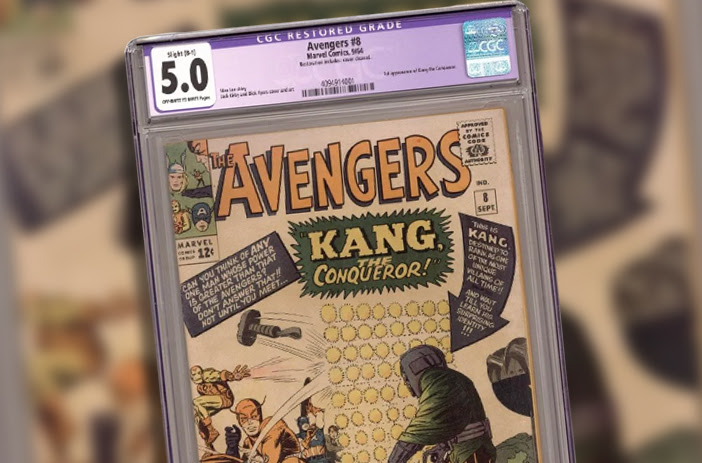
One thing I want to make note of here is the difference between cleaning and restoration. Pop quiz: is it restoration if someone takes an eraser to a comic to remove stray pencil marks and pull dirt off some white areas on the cover?
Answer: no. Cleaning (and pressing) is a process of using nondestructive, nonconstructive ways to remove dirt, debris, and markings. It can lighten whites and remove blemishes, but it doesn't involve restoring ink or paper (which would be constructive) or otherwise damaging the book. Pressing, similarly, uses controlled humidity to soften the paper and weight to flatten it to minimize creases and folds without damaging the book. These are considered fine by most collectors and comic grading companies. CGC even offers its own cleaning and pressing service. You can read more about pressing and cleaning here.
Misrepresented Books
A more common issue is misrepresenting books. This generally comes down to two things: claiming a book is something it isn't or claiming it's rarer than it is.
For example, some comics have variants, and sometimes those variants can be hard to spot. A slick conman can claim a comic is a variant, point to a small detail – or even a misprint or something they added in with a marker – and convince the unwary that the comic is a rare and valuable variant.
More commonly, you have things like people passing off reprints as the rarer first editions of a comic. The most common example of this is the ever-famous Action Comics #1, one of the top three most valuable comics in the world. Back years and years ago, when that comic was getting very popular (but still wasn't a million-dollar book), DC decided to cash in and printed it, along with a variety of others, as "Famous First Editions" or "Treasury Editions" of the book.
Now, they knew there needed to be some difference between the original and the reprint, so they did two things. The first was to add a second cover. This second cover had an expanded border with the new price, more information about why the comic was famous – as if anyone needed to know why Superman was famous – and more. But inside, was the original cover there in all its glory, and friends? Covers can be removed.
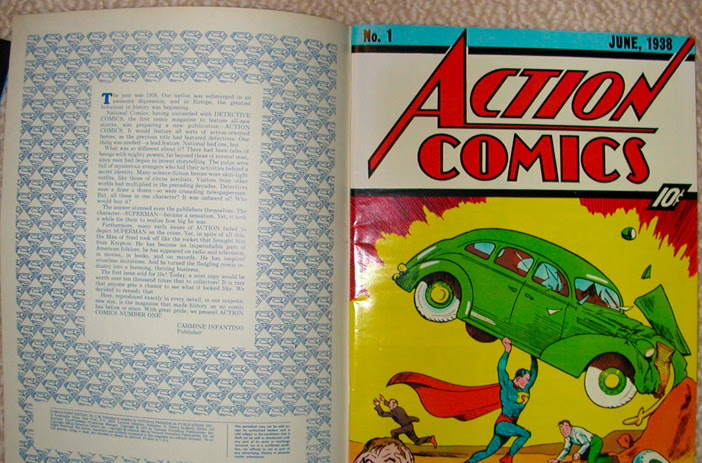
So, that's what people did. Removing the outer cover left you with something that looked, at a glance, just like Action Comics #1. That left many people feeling like they had something valuable on their hands, and buying it for just a fraction of its collectible price was surely a steal, right?
Well, this is where the other thing DC did comes in. They made it physically larger. Unfortunately, people unfamiliar with the size of comics might still be tricked, and people still try to pull this scam.
The Reholdering Scam
Something else worth mentioning is a recent scandal breaking in the comics world.
When you get a comic graded, you send it to CGC, they inspect it, assign it a grade, and encapsulate it in a hard plastic shell known as a slab. Slabs are sealed and are tamper-evidence, so if anyone tried to do something like swap the comic inside with a less valuable version, it would be obvious.
What happens if your slab gets damaged? Maybe your cat knocked it off a shelf, and it cracked, or it got crunched in transit, and now the plastic is damaged, and it looks miserable on a shelf. Well, CGC has you covered: you can send it in, and they'll reholder it for you, putting it in a new sealed slab.
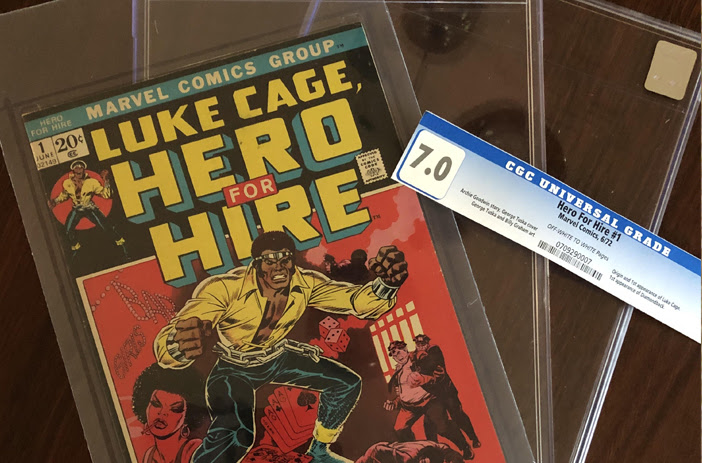
Well, at some point, someone discovered that CGC didn't really pay much attention when reholdering comics. So, they took a high-grade version of a comic and a lower-grade version of a comic. They got the higher-grade comic graded. Then they broke the slab, swapped the comics, and sent it in for reholdering. CGC, not inspecting the comic for a simple reholdering, slabbed it back up, and boom: now you had a low-grade comic officially sealed in the slab for a high-grade comic. That book could then be sold for a lot more than it was worth, and the scammer, still with the high grade in their possession, could get it graded from scratch and repeat. Or, more often, sell the comic raw and start over with a different comic so as not to be so easily caught.
There's no telling how long this scam was being run or how widespread it is, but if you're buying CGC comics, it can be worth giving them a look to make sure they match their grade.
Spotting Fakes and Frauds as a Comic Collector
So, that's a rundown of the fakes, frauds, and comic-related scams that you might encounter in the comics industry as a buyer or as a seller. The question is, how do you spot them and protect yourself?
Unfortunately, there's no simple answer. You just need to be able to research the comic you're interested in buying or the comics you have and learn what they are and what you need to watch out for. It's as much a matter of experience as it is observation.
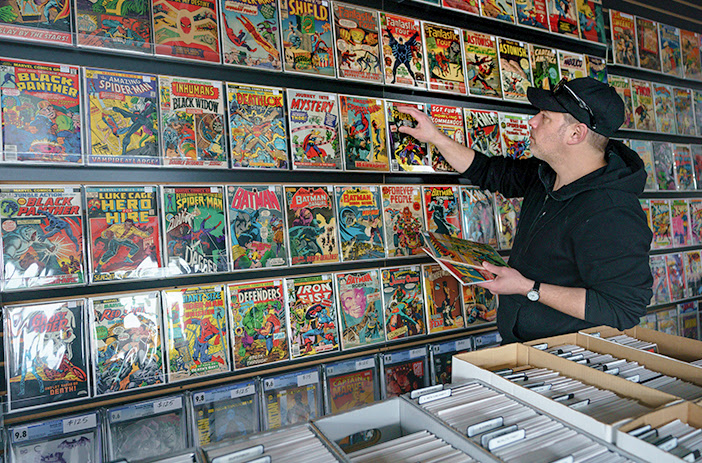
Fortunately, there are often tells you can use, and as long as you don't let greed get the best of you, you can keep yourself safe. Never be afraid to ask questions, especially if something doesn't add up. If whoever is on the other side of the deal doesn't want to answer or pressures you into a sale with claims that they have other buyers lined up, or they can't wait around, just walk away. Real collectors and vendors have time; they aren't under that kind of pressure.
On top of that, you can always feel free to reach out to local or online comic experts. Usually, a few decent-quality photos are all it takes to weed out the most common scams, and anything else can be dealt with by asking more questions, like the size of the comic for the Famous Firsts scam.
And, of course, if you're selling comics and you don't know what they're worth, you can trust us to know. Just fill out our form and drop us a line; we can help you identify what you have, watch out for anything rare or notable, and help you decide what to do with them.



